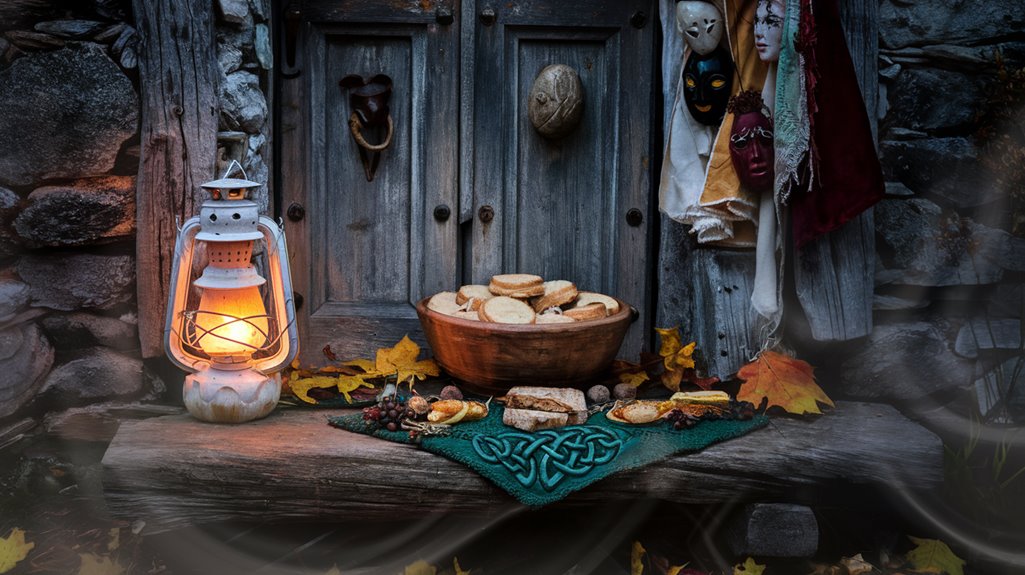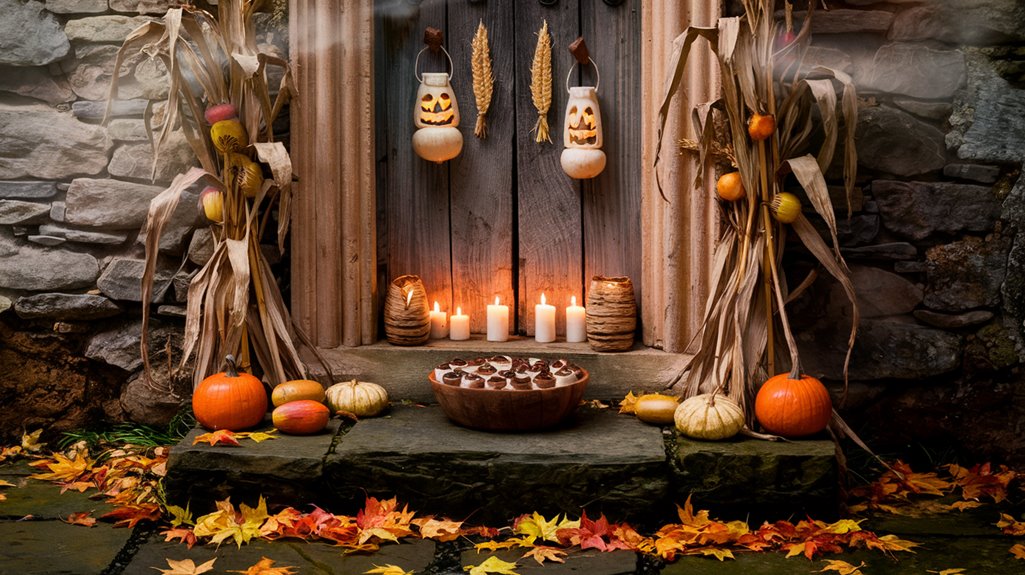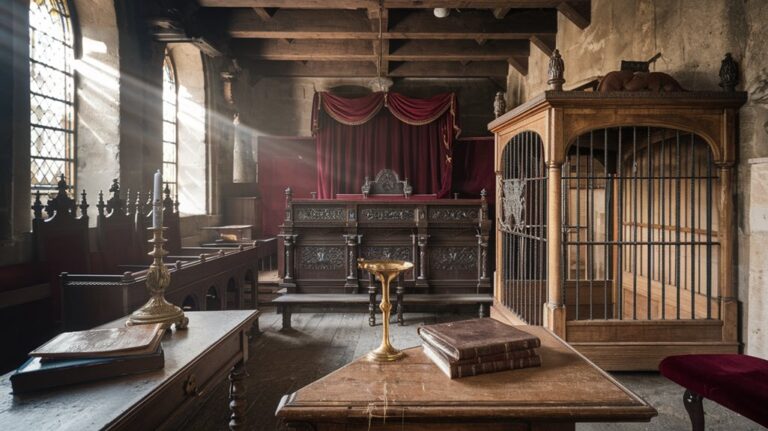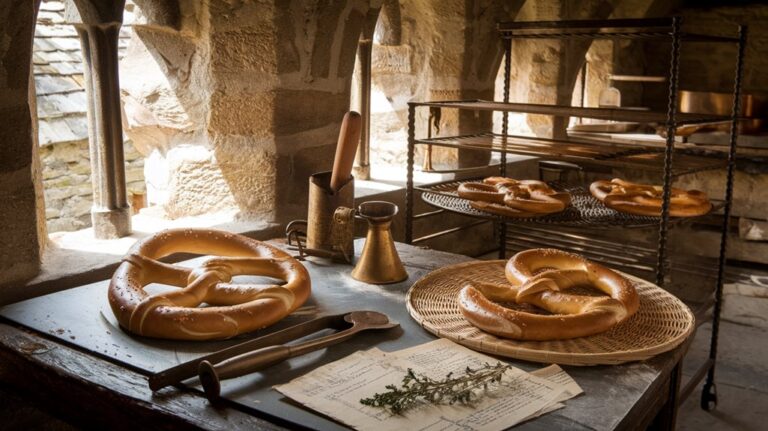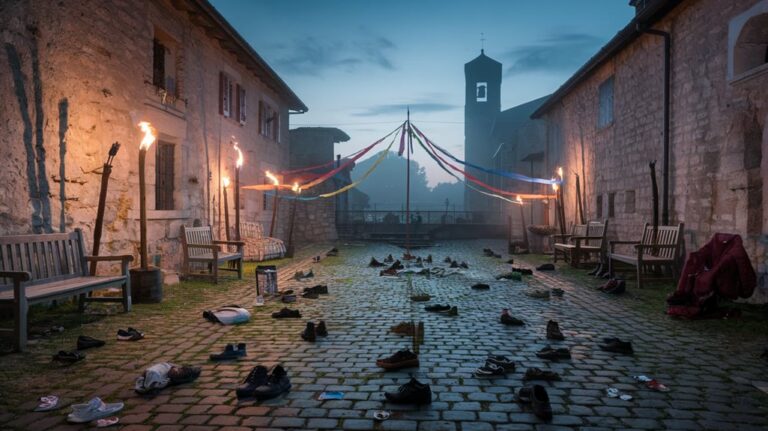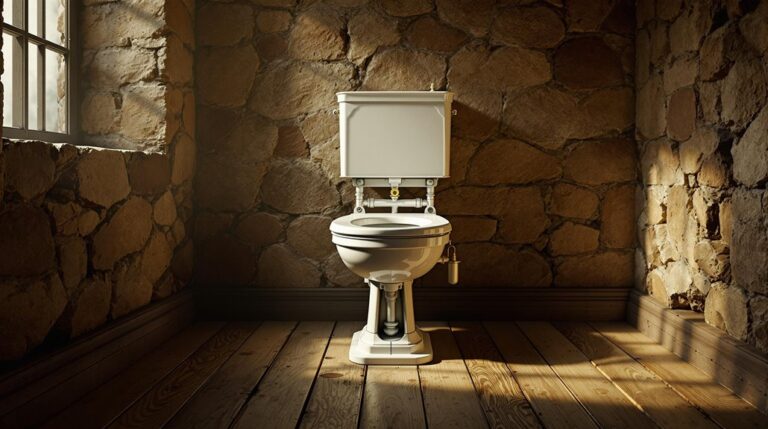Trick-or-Treating Has Roots in Medieval Traditions
You might think of trick-or-treating as a modern custom, but its origins will surprise you. When you walk door-to-door collecting candy each Halloween, you're following in the footsteps of medieval children who once sang prayers in exchange for soul cakes. This ancient practice, known as "souling," formed part of a broader spiritual tradition that connected communities through food sharing and remembrance of the dead. The story of how this solemn ritual transformed into today's festive tradition reveals fascinating cultural shifts.
The Ancient Celtic Festival of Samhain
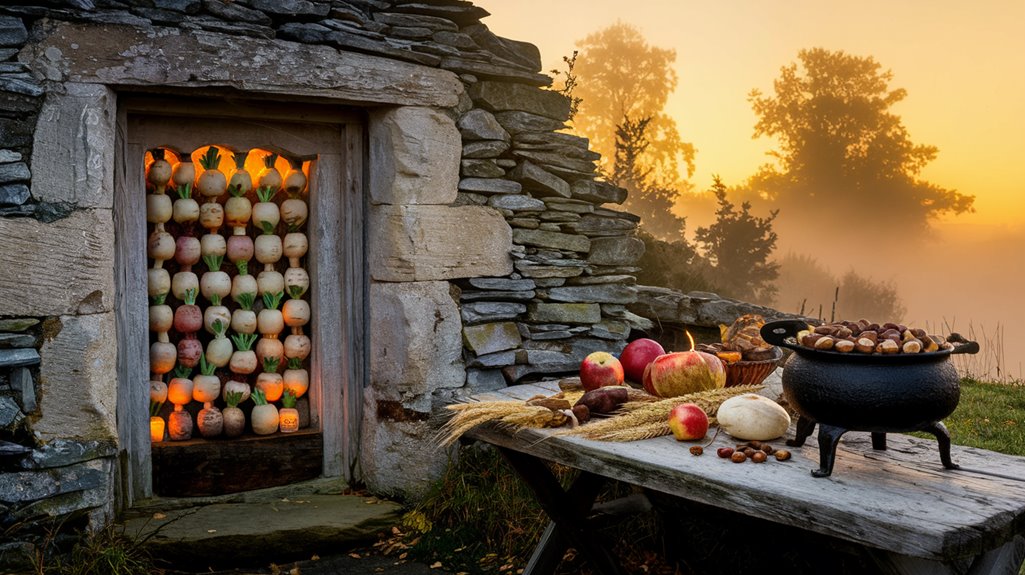
While many see Halloween as a modern celebration of costumes and candy, its roots trace back to the ancient Celtic festival of Samhain, marking the critical shift between summer and winter.
You'll find that these Celtic traditions held deep spiritual significance, as people believed the boundary between the worlds of the living and dead became blurred during this time. People would leave food and drink offerings out to appease the wandering spirits.
The harvest rituals involved lighting communal bonfires using a ceremonial wheel representing the sun, and families would carry flames back to rekindle their hearth fires.
You'd have seen six days of feasting and drinking, with special thrones prepared for military commanders.
If you lived in those times, you'd be expected to participate in the celebrations – failing to do so could anger the gods and bring divine punishment. The celebrations were considered strictly mandatory for all community members, lasting three days and nights.
Medieval Soul-Cakes and Prayer Offerings
As the Celtic traditions of Samhain spread across Europe, they merged with Christian customs to create new practices, including the distribution of soul cakes during Allhallowtide.
You'll find the soul cake symbolism deeply rooted in medieval Britain and Ireland, where people would bake these cross-marked treats and share them with the poor in exchange for prayer offerings. Souling customs were believed to help free souls trapped in purgatory.
The earliest records show that guising in Scotland began appearing in the sixteenth century as children performed for food and treats.
The tradition involved three key elements:
- Bakers marked the cakes with crosses and added sweet spices and raisins
- Children and poor folks went door-to-door singing verses to request the cakes
- Recipients offered prayers for the souls of the deceased in return
You can still see this custom's influence today in modern trick-or-treating, and some communities in Portugal and the Philippines continue to honor this medieval practice during Allhallowtide celebrations.
Guising and Mumming Through History
Before modern trick-or-treating became popular in America, Scottish and Irish children practiced "guising," where they earned treats through performances rather than simply asking for candy.
If you'd visited Scotland or Ireland during Halloween, you would've seen children in disguises performing songs, poems, or jokes to receive fruits, nuts, or coins from their neighbors.
In medieval times, poor children would go door to door and offer prayers for deceased neighbors in exchange for food.
This tradition shares its mumming heritage with pre-Christian Celtic customs, where people wore costumes to ward off spirits.
When Irish and Scottish immigrants brought these practices to North America in the 19th century, they helped shape today's trick-or-treating.
These practices gained significant momentum during the Great Depression era as communities found ways to share resources and maintain festive traditions.
You'll notice how different this is from modern Halloween, where the performance aspect has largely disappeared.
While today's celebration focuses on candy collection, guising performances required children to showcase their talents for rewards.
From Pagan Rituals to Christian Celebrations
The roots of trick-or-treating stretch far beyond the guising traditions of Scotland and Ireland, deep into ancient Celtic paganism. During the festival of Samhain, the pagan origins of this custom centered on leaving offerings for spirits who could cross between worlds on October 31st. Young performers would sing or recite poetry in exchange for treats.
As Christianity spread through Celtic lands, christian adaptations transformed these practices into more structured celebrations. The distribution of soul cakes became a common practice during this period.
You'll recognize these ancient influences in modern Halloween through:
- The tradition of wearing costumes, which stems from Celts donning animal pelts to ward off spirits.
- The practice of going door-to-door, which evolved from medieval "souling" when children prayed for the dead in exchange for food.
- The timing of Halloween itself, which aligns with the Celtic New Year and the Christian All Souls' Day.
The Rise of Modern Trick-or-Treating
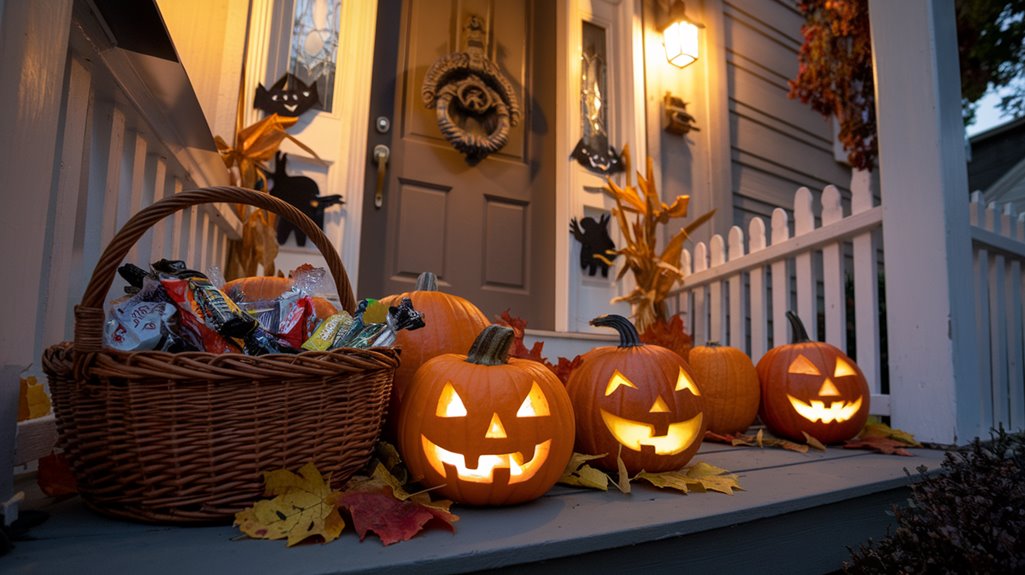
Modern trick-or-treating emerged in America during the 1920s, when children first began dressing up and going door-to-door for treats.
During the Great Depression, this practice gained momentum as communities shared resources and fostered neighborhood connections. Early Halloween celebrations often featured pranks and mischief as the main activities among young people. Early treats included homemade goods like cookies and popcorn balls. Irish and Scottish immigrants' cultural influences, including souling and mumming traditions, helped shape the custom.
You'll find the tradition evolved greatly after World War II when sugar rationing ended and candy became readily available.
By 1951, trick-or-treating had become so ingrained in American culture that it appeared in popular media like Peanuts comics and Disney cartoons.
Today's community engagement continues to transform the tradition through alternatives like "Trunk or Treat" events and Halloween festivals, adapting to modern safety concerns while maintaining the spirit of neighborhood celebration.
Global Impact and Cultural Evolution
Throughout history, trick-or-treating has transcended its Celtic and Roman origins to become a global cultural phenomenon. You'll find its cultural adaptations spanning continents, from ancient Greek children singing for treats to Scottish guising traditions of the 16th century. These traditions emerged from how early Celtic people dressed up to avoid confrontation with evil spirits. Costumed performances became a cherished tradition during the Middle Ages through mumming practices.
Today, global participation includes millions of families who've embraced this evolving custom.

